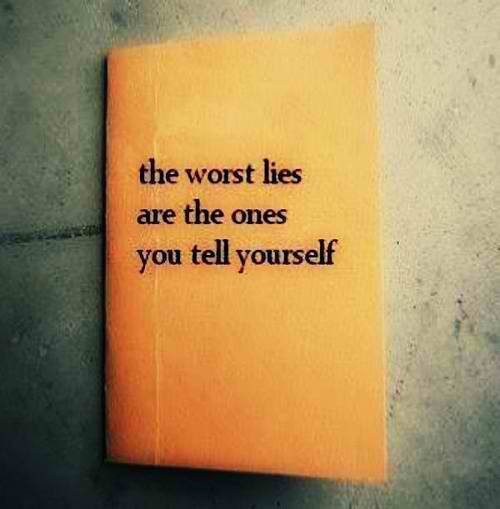A little while ago, someone commented that they were disappointed to see that I had written the essay, “Fight Like a Hobbit! Fight Climate Change!”, when I had previously published “‘You’re Not Fucking Gandalf”: 12 Movies to Remind You That Pagans Need to Grow Up’. Continue reading “I’d Rather Be a Hobbit than a Wizard”
Paganism Needs a Prophet (but it ain’t me)
Note: What follows arose out of a discussion in the comments to a recent post entitled, Religious Leave-Taking as Asking Different Questions, in which I described my growing disinterest in most Pagan discussions and the change in the questions that most concern me now. One of the commenters, Phil Anderson, challenged me to continue to be “a purveyor of sense and reason in the paganosphere”. His comment prompted a long response from me, which I have edited and reproduced here. Where important for context, I have reproduced parts of Anderson’s comment here.
For a long time, I believed that a naturalistic* version of Paganism was the most genuine expression of contemporary Paganism. When I came to Neo-Paganism, I thought it was naturalistic at its core, and I thought the supernaturalism I saw was aberrant. It seemed to me to be an unfortunate consequence of a historical accident, the infiltration of occultism into the neopagan revival via Gerald Gardner’s Wicca. And there are several academics whose work support this notion, including Robert Ellwood & Harry Partin, Joanne Pearson, and Wouter Hanegraaff. I thought these strands–the occultist and the neo-pagan–could be separated, and so I set about trying to unwind them. Continue reading “Paganism Needs a Prophet (but it ain’t me)”
Nine Things I Wish I’d Known Before I Became Pagan
1. It’s not like in the books.
Like a lot of other Pagans, I read a lot of books about Pagans before I ever actually met another Pagan in the flesh. My first sources for my image of the contemporary Pagan came from Ronald Hutton’s Triumph of the Moon (1999), Margot Adler’s Drawing Down the Moon (1979, 1986, 1996, 2006), and Starhawk’s The Spiral Dance (1979, 1989, 1999). The first was academic, the second journalistic, and the third rhapsodic. As a result, my pre-formed image of Pagans was somewhat idealized. (I once heard Margot Adler admit in an interview that the Paganism she and Starthawk described in their respective books as more of an ideal than a reality.) I have since learned that the best way to learn about a religion is not by reading a book about it, but by going and seeing the real thing. Continue reading “Nine Things I Wish I’d Known Before I Became Pagan”
Pagan with a small “p”
Pagan-Adjacent?
I recently met someone who described himself as “Pagan-adjacent”, which I thought was an interesting self-designation. He was a (self-described) “angry atheist” who followed atheism to its logical end and was left wanting. He intuited that there was something else–something bigger and/or deeper–but no one seemed to be writing or talking about it. Then he discovered David Abram’s Spell of the Sensuous, which he experienced as revolutionary.
He told me that he knows “in his bones” that “the sacred is in the soil and the wind,” but he is turned off by a lot of what he sees in the Pagan community. By way of example, he told me about an encounter with a Pagan group where he heard one person talking about how great the divination app on her phone was. I know what he is talking about. What has a divination app to do with the sacred soil?
I’ve felt pretty much the same way for 15 years, for as long as I have been calling myself “Pagan” in fact. I came to the Pagan community because I thought here was where I would find that something bigger and deeper. But almost everywhere I look, I see the small and shallow. Almost everywhere I look, I see Pagans reproducing the disenchantment of the mainstream culture. Continue reading “Pagan with a small “p””
5 Ways Paganism Needs to Grow Up
Paganism is at a turning point. It’s been 50 years since contemporary Paganism got its start. It’s time for Paganism to grow up.
Stages of Faith
Note that I didn’t say that it’s time for Pagans to grow up. Different people are at different point in their life’s journey. Childhood and adolescence are important stages of development. There are stages in a person’s religious or spiritual development as well. And, as much as most of us would have liked to skip adolescence, it’s not possible to skip stages. The same is true of spiritual adolescence. Continue reading “5 Ways Paganism Needs to Grow Up”
These Things Aren’t True: Five Falsehoods in the Pagan Community
I’m no stranger to conflict in Pagan circles. Over the years, I have noticed similar themes arise when I come into conflict with other Pagans. These themes can be summarized as five lies that Pagans tell themselves.
Continue reading “These Things Aren’t True: Five Falsehoods in the Pagan Community”
Ego-Paganism and the Tyranny of Structurelessness
Note: I wrote this a couple years ago, but it seems appropriate to resurrect it now (with some revisions). Continue reading “Ego-Paganism and the Tyranny of Structurelessness”
Nothing to see here folks. Paganism is fine, really, just fine.
Paganism is not dying. Paganism is NOT dying. PAGANISM IS NOT DYING!
Why don’t you believe me?
People who are telling you otherwise (like He Who Shall Not Be Named at Patheos) just want attention. Attention whores!
Believe me, Paganism is fine. It’s just fine. I mean, it’s okay. Really. Continue reading “Nothing to see here folks. Paganism is fine, really, just fine.”
Eight Ways Pagans Can Celebrate Earth Day
For many contemporary Pagans, Paganism takes the form of a nature religion or earth-centered spirituality. According to Religious Studies scholar, Michael York, a nature religion is one that has “a this-worldly focus and deep reverence for the earth as something sacred and something to be cherished.” Not surprisingly then, Earth Day (April 22 this year) is a holy day for many Pagans. Here are some ways that we Pagans can celebrate Earth Day. Continue reading “Eight Ways Pagans Can Celebrate Earth Day”








